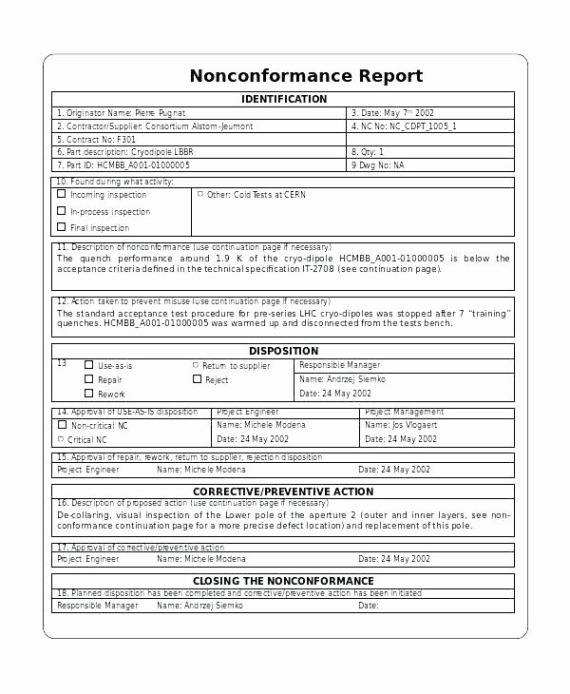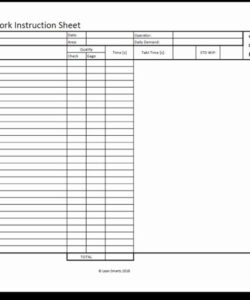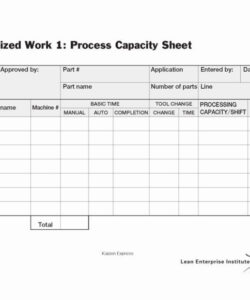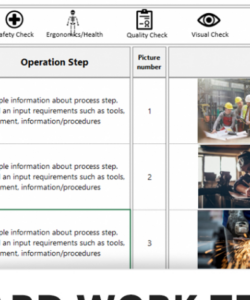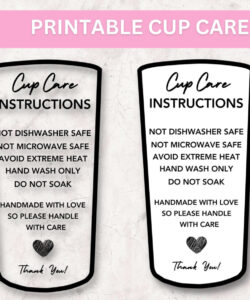Standard work instruction template. Have you ever caught yourself giving the same explanation time and again? Whether it’s guiding a new staff member through a process, helping a customer resolve an issue, or even just reminding your kids about their chores, clear guidance is essential. But repeating yourself over and over can be exhausting and ineffective. That’s where an instruction template becomes beneficial. It’s like having a pre-written script for common tasks and procedures, helping you save time and maintain consistency.
Imagine an instruction template as your secret ally in avoiding confusion. It’s a ready-made format that leads you through creating clear, concise, and thorough instructions. From simple tasks like changing a lightbulb to more complex procedures like assembling furniture, an instruction template can make the complete process significantly smoother for you and the individual following your guidance. It saves you time and reduces the risk of misunderstandings. Now, let’s dive into the world of instruction templates and understand how they can change the way you communicate.
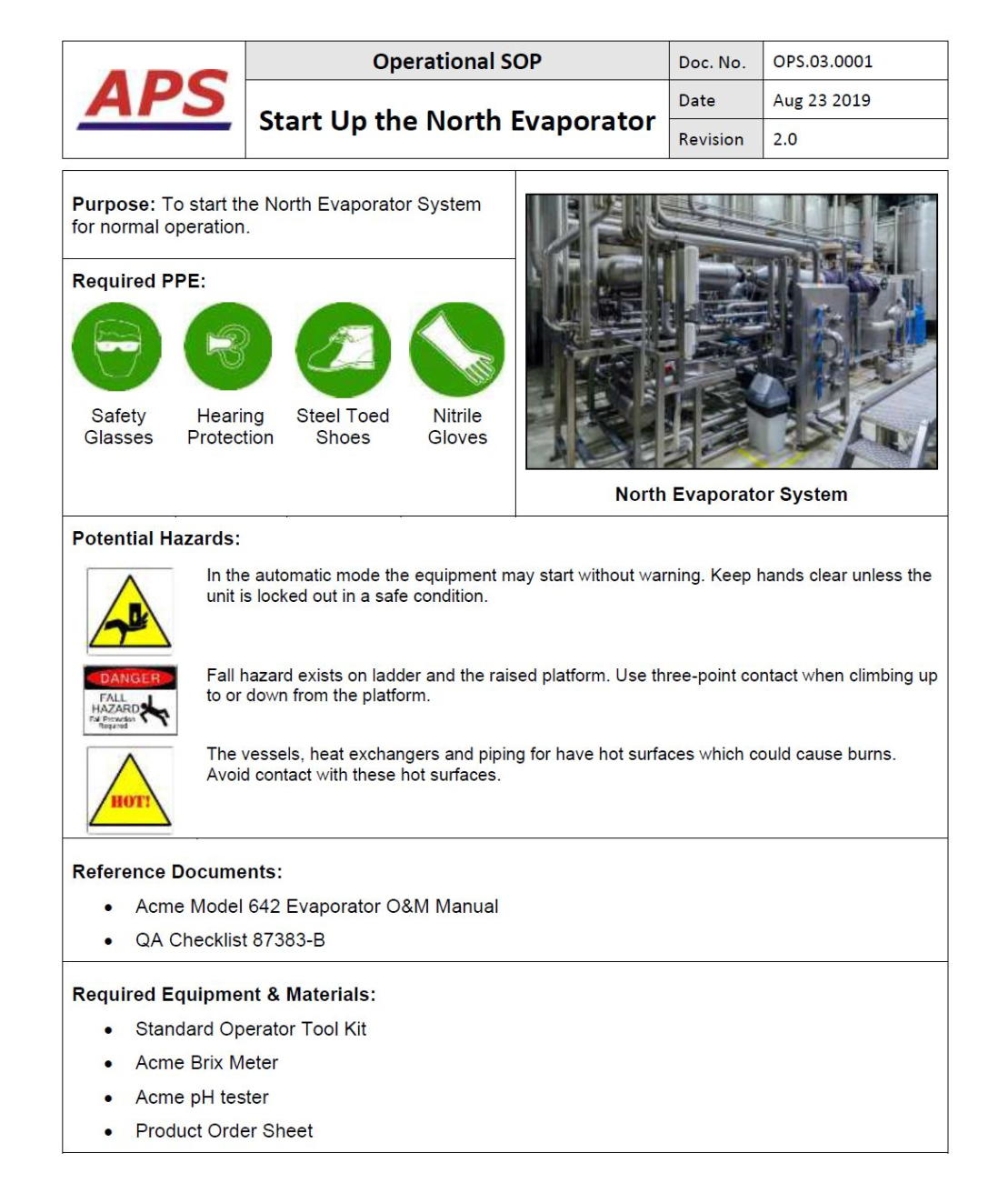
One of the greatest advantages of using an instruction template is uniformity. When you use a template, you establish a standardized format for all your instructions. This makes it simpler for individuals to comprehend and follow your instructions, no matter the task. Consistency minimizes confusion and enhances the overall user experience.
Secondly, an instruction template can help you avoid missing crucial steps. By providing a pre-established structure, it prompts you to consider all the necessary details. This reduces the risk of excluding key information that could result in mistakes or frustration. For example, if you’re drafting instructions for constructing a piece of furniture, a template might encourage you to incorporate details about the tools needed, the assembly order, and any safety guidelines.
Clarity is crucial when conveying instructions. An instruction template aids you in delivering information in a clear and brief way, lessening ambiguity and potential confusion. By dividing complex tasks into simpler, more achievable steps, a template guarantees that your audience can comprehend the information and follow the instructions properly. This is especially important for tasks that involve multiple steps or require specific actions.
Lastly, employing an instruction template can enhance the overall quality of your instructions. By providing a structured format, it inspires you to meticulously think through each step, address possible challenges, and add valuable tips and cautions. This results in clearer and more accessible instructions, leading to greater satisfaction for everyone involved.
A popular type is the step-by-step instruction template. This format is perfect for explaining sequential processes, where each step must be completed in a specific order. This might be used for a range of activities, from making a recipe to assembling furniture. Each step is clearly detailed, making it easy for the reader to follow along.
Checklists are another important instruction template style. They are perfect for tasks that include multiple items or need verification. A checklist guarantees that all required steps are finished and nothing is neglected. This can be particularly helpful in project oversight, quality checking, and routine tasks like packing for travel.
Flowchart templates are useful for visualizing complex processes. They use symbols and arrows to represent the different steps and decisions involved in a particular task. This type of template can be beneficial for elucidating technical procedures or diagnosing problems.
For people who like a more visual strategy, visual instruction templates can be used. These templates rely heavily on images or diagrams to convey information. They are particularly effective for tasks that are difficult to explain in words, such as knot tying or folding intricate origami. A picture can convey much more than words, and visual instruction templates leverage this.
Ultimately, always test your instruction template. Have someone unfamiliar with the task follow your instructions and provide feedback. This will help you identify any areas that need clarification or improvement. Testing your instructions is essential for ensuring they are effective and user-friendly. This also helps you verify that your instruction template fulfills its function.
To conclude, an instruction template is a potent resource for anyone who requires clear and effective communication. Whether you’re drafting a recipe, detailing a work process, or developing a DIY guide, a template can conserve time, enhance clarity, and ensure uniformity.
So, the next time you find yourself struggling to explain something, consider using an instruction template. It might just be the key to unlocking clear and effective communication. From basic daily tasks to intricate technical processes, an instruction template can help you get your point across clearly and accurately. It’s a useful tool for anyone looking to enhance their communication skills.
